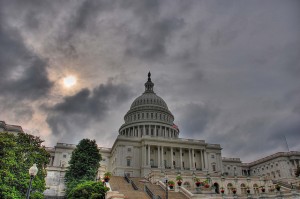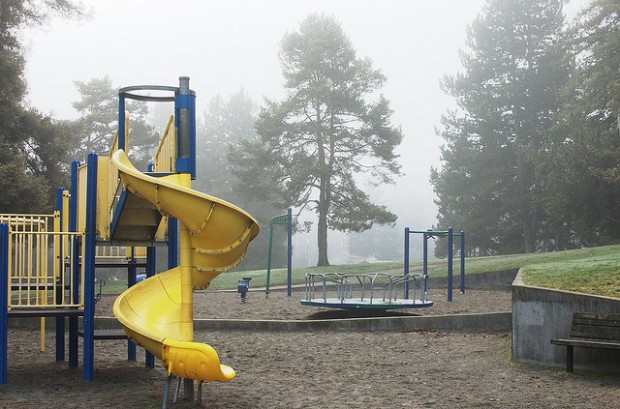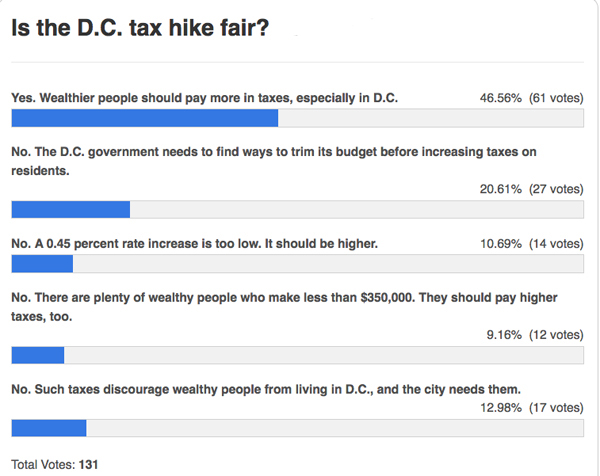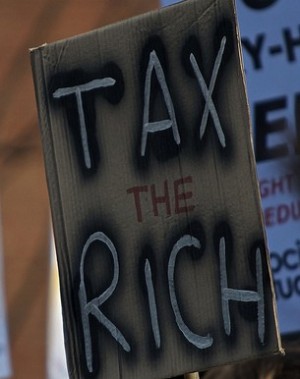D.C. is a microcosm of national class disparities, and the country saw the gulf between the rich and poor widen during the recession. Theo Balcomb, production assistant for “All Things Considered,” writes about these “two Americas” she saw while helping produce stories on the economy.
While in Spartanburg, S.C., Balcomb met a diabetic pregnant woman on disability, “struggling to sort through cereal and pork patties in her food pantry box.” Balcolm witnessed the other America when reporting from New York’s Upper East Side, where, while visiting a seven-story mansion, her “biggest concern was not getting winded as I carried a bottle of wine, a corkscrew and a cheese plate up to the roof.”
And that’s what’s confusing: That America is a place where these two worlds can coexist, often without knowledge of each other. One where a pregnant woman has to wait in line for frozen pork patties, and one where I’m in New York being offered goat cheese and fig spread and crisp gluten-free crackers and low-fat string cheese.
The contrast has always been there, but it’s looking stark right about now. The 27-year-old woman working in the grocery store lit up when she had this thought: Those people in Washington, those people with all the money who make all the decisions, they should have to live a week in our shoes. It could be a new reality show, she said brightly. Just a week. Just a week in our shoes.

Victor Cheung / Flickr
The U.S. Capitol isn't far from some of D.C.'s poorest neighborhoods.
Many around the country view D.C. as the power capital of the world, but the District’s disparities are some of the starkest. The D.C. region has the highest incomes and lowest poverty rates in the nation. But 1 in 5 people in the District proper live below the poverty line. In Ward 3, 49 percent of people have incomes higher than $100,000 annually and unemployment is about 3 percent. A few miles away in Ward 8, 41.1 percent of people have incomes below $25,000 and unemployment is at about 25 percent.
Those “people in Washington… with all the money who make all the decisions” are presumably politicians and lobbyists on Capitol Hill. They don’t need to travel to South Carolina to see poverty or hardship. They can drive 10 minutes away to see it.








